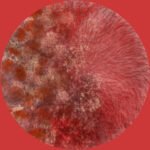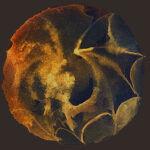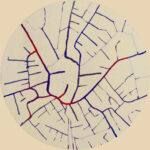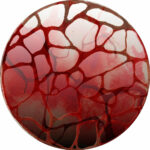Visualizing
the Virus
Illuminating COVID-19’s Origins
How ‘Virus Hunters’ Display Bats
Pictures of bats have come to illustrate news items on the origins of the COVID-19 pandemic. The SARS-CoV-2 virus responsible for the outbreak belongs to the Coronaviridae family of viruses, for which birds and small mammals such as bats presumably serve as reservoirs. Bat species are susceptible to hosting and shedding viruses without experiencing disease symptoms by virtue of their flight-adapted immune system. Their proneness to act as pathogen reservoirs distinguishes them for sampling efforts, which have operated on an increasingly vast scale in the last 15 years. Bat sample collections were used last year to identify the virus most closely related to SARS-CoV-2, a bat sarbecovirus named RaTG13, and to speculate on the cross-species evolution of SARS-CoV-2. Samplers of zoonotic viruses, popularly known as ‘virus hunters’, originally gained fame for their research on viruses such as those responsible for Ebola and HIV/AIDS. But growing interest in the search for the origins of COVID-19 has brought their activity to light in the mainstream media, where it is abundantly illustrated with visuals.
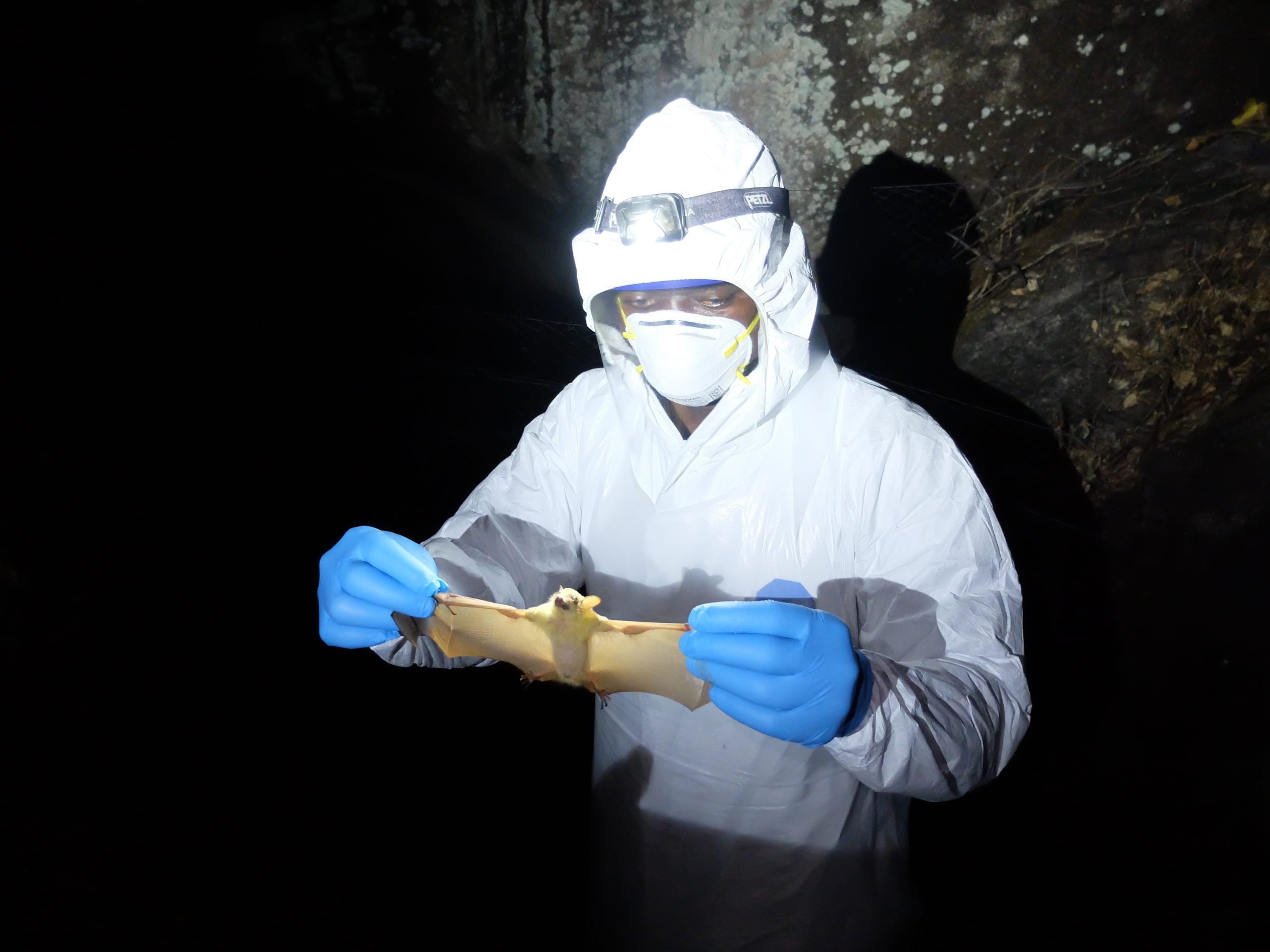
‘Virus hunter’ holding a bat in display position, 2018 Credits: Emmanuelle Roth
The bats used by the media to illustrate COVID-19’s origins are either depicted in their environment (hanging on a tree, flying in a cave), or, as in Figure 1, handled by ‘virus hunters’. The figure of the ‘virus hunter’ commonly stands against a dark or black background, as bats are captured during their night-time flights while they forage for food. Figure 2, however, was taken at dusk in a Guinean village, where one local assistant to such a virus hunting enterprise displays a bat so that the audience (journalists, bystanders, etc.) can take pictures of it. This displaying technique is not recommended by bat specialists (chiropterologists) for welfare reasons. Holding bats by their fingertips with their wings outstretched, their elbows pinned towards their backs, may inflict pain and injure the animals. The extended wing position is only used with live animals to take arm measurements and during biopsies, performed on one wing while the bat’s body is restrained with one hand, using a thumb and forefingers in apposition. Accordingly, the bat display technique shown in Figures 1 and 2 is solely employed for the purpose of producing visual representations of the animal.
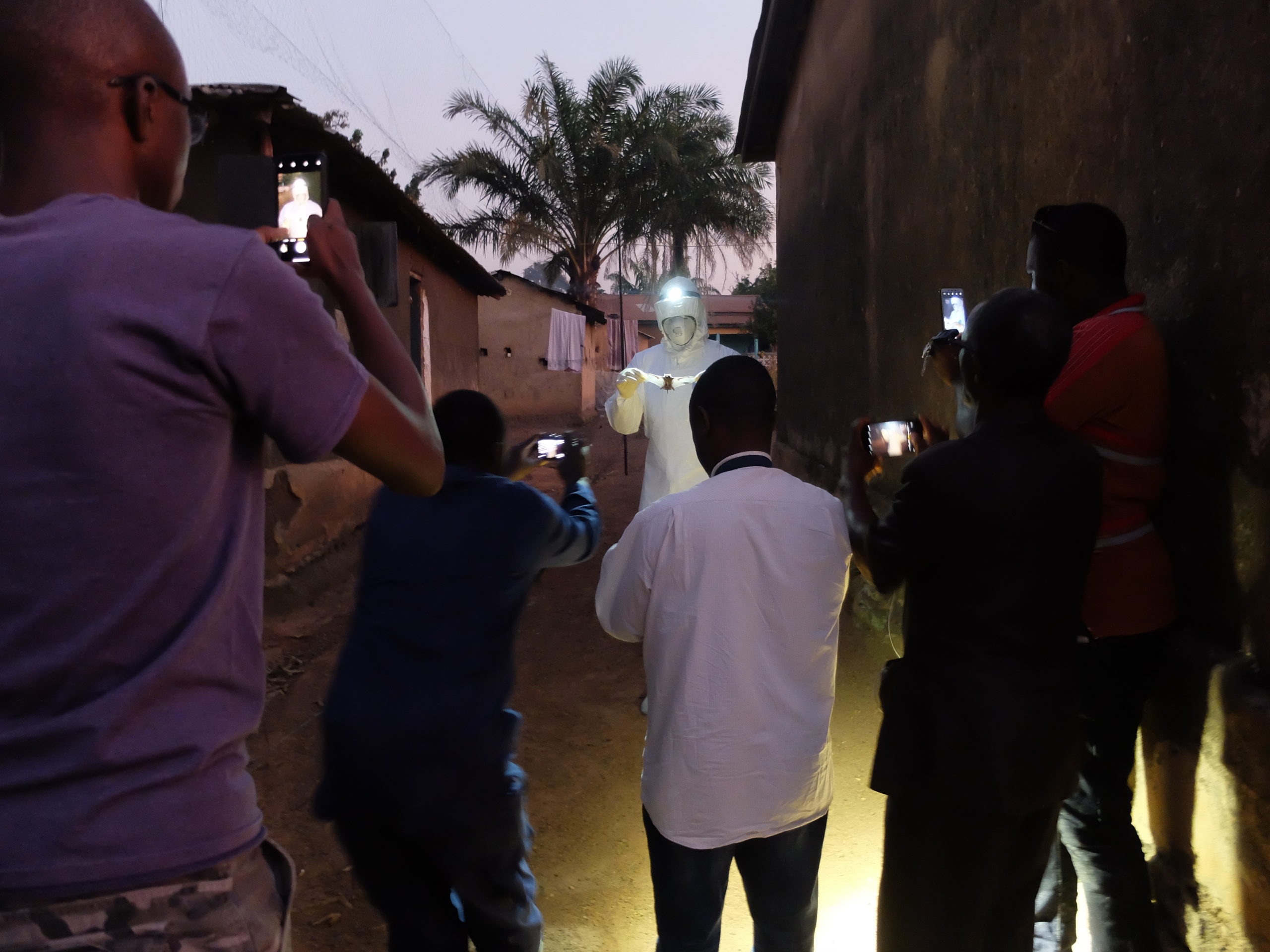
People taking pictures of a bat in display position in Kissidougou, Guinea, 2018. Credits: Emmanuelle Roth
‘Virus hunters’ use photography as a demonstrative technique. Bat photographs are an evidencing technology, in which the overextended bat serves as proof of the aetiological origin of zoonotic diseases such as COVID-19. In these pictures, however, the animal is not only severed from its environment: it is also extracted from the field of multispecies proximities and intimate bodily exchanges where cross-species infection may occur. Visual representations of bats as reservoirs of SARS-CoV-2 differ from those of Chinese ‘wet market’ animals (civet cats, pangolins, etc), which circulated during the 2003 SARS epidemic and in the early days of the COVID-19 outbreak. They materialise a mediating stage between bacteriological depictions of disease agents, where lab microscopes are given the monopoly on visual representations of infectious diseases, and environmental depictions, where photography seeks to capture ‘unsanitary’ relations between humans, animals and microbes. On the threshold between messy wilderness and the controlled lab, the transparency of bat wings contrasts with the invisible density of the viruses contained in their body. Yet the peril of zoonotic disease to humanity is made visible by the biosecurity gear and gloves, which protect and anonymise the ‘virus hunter’, whose racial identity is thus concealed.
Why do bats occupy this mediating space of in/visibility in contemporary epidemic photography? This may have to do with the lifeworlds where humans and bats coexist, e.g. in the obscure privacy of sleeping rooms under the roofs where bats roost, and their inaccessibility to photographers. But this may also relate to the exoticising attractiveness of such a mythically loaded representation. The dark mass behind the ‘virus hunter’ may stand for the wild (African or Asian) jungle where pathogens breed, impenetrable to the beacon of scientific light. The overextended, overexposed bat is a metonymic flying vessel for viruses, waiting there to be collected by plastic-clad universalized scientists.
